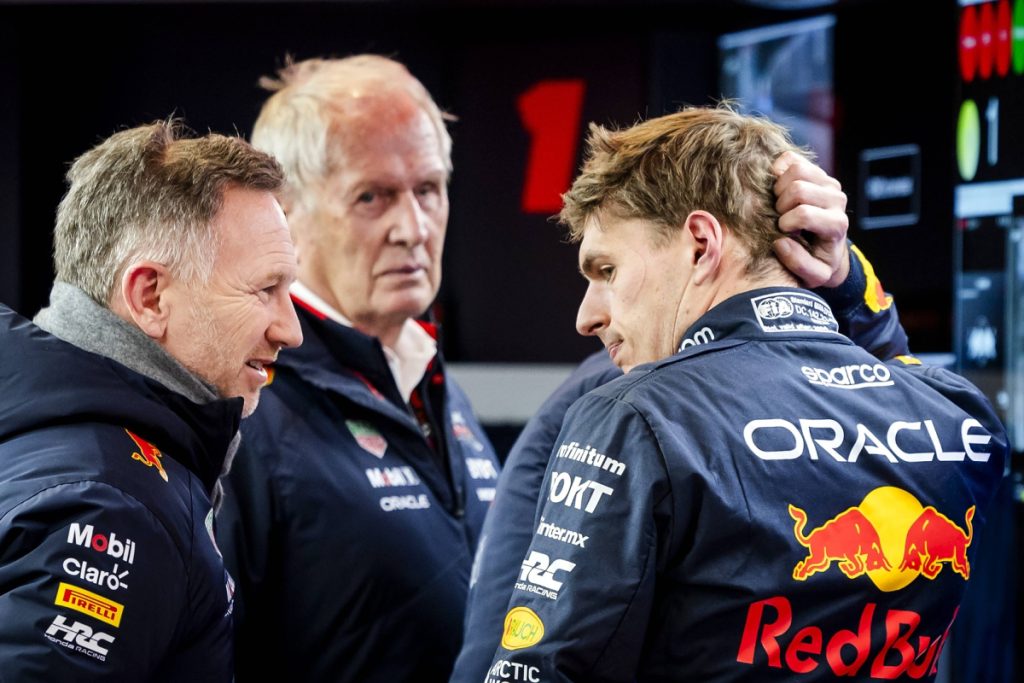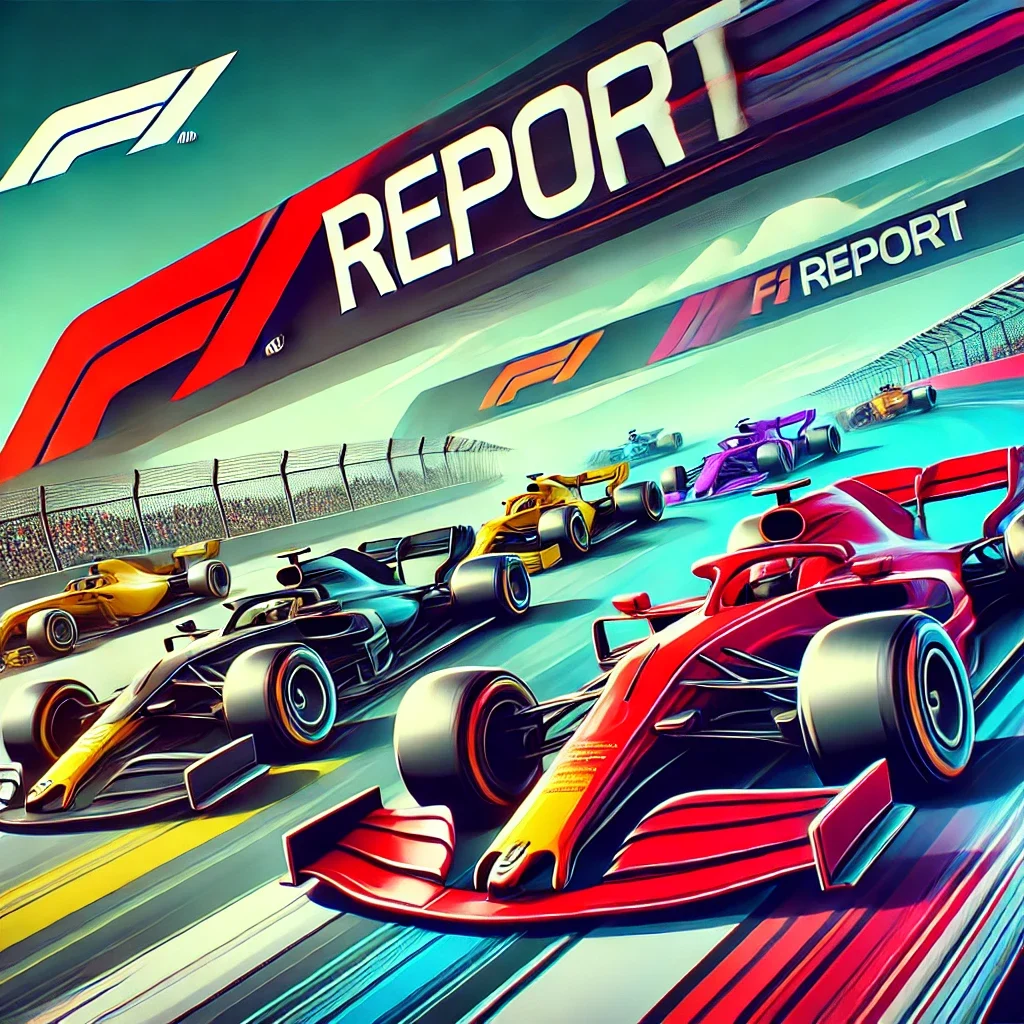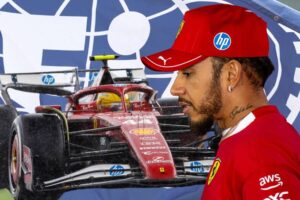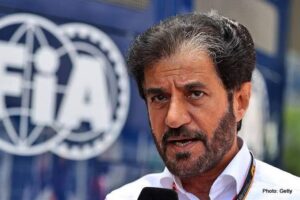F1 updates: Horner Denies Red Bull “Rookie Error” in Vegas, Explains Rear Wing Decision…..read more

Horner Denies Red Bull “Rookie Error” in Vegas, Explains Rear Wing Decision…..read more
Red Bull Racing’s team principal, Christian Horner, recently clarified a perplexing statement made during the Las Vegas Grand Prix weekend, dispelling rumors around a supposed “rookie mistake” in their car setup. This clarification came after a challenging start for Red Bull at the high-profile Las Vegas race. Despite Red Bull’s setbacks, Max Verstappen managed a P5 finish that cemented his fourth consecutive drivers’ championship. Mercedes, however, was the team to watch early on, with the Silver Arrows’ drivers leading the timesheets across the practice sessions and delivering a powerful 1-2 finish in the main event, thanks to George Russell and Lewis Hamilton’s impressive performances.
As Red Bull celebrated Verstappen’s individual triumph, they also took solace in Sergio Perez scoring a point, a valuable addition as Red Bull pursues an ambitious comeback in the constructors’ standings. This achievement followed a somewhat controversial comment from Red Bull’s advisor, Helmut Marko, regarding the rear wing issue Red Bull encountered over the weekend.
The confusion started when Marko told the media that Red Bull had arrived in Las Vegas without the correct rear wing for the high-speed demands of the Las Vegas circuit. Given the unique nature of the Las Vegas street track, which has extremely low downforce requirements similar to those at the Monza circuit, not having an optimized wing could compromise Red Bull’s performance against rivals like Mercedes, whose cars seemed better suited for the conditions. Marko’s remark implied that Red Bull’s lack of a proper rear wing setup was due to an oversight in their logistics or planning, sparking a wave of speculation about the team’s preparedness and strategic decisions.
However, Horner later addressed the comment, firmly denying that Red Bull had “forgotten” a key part of their setup. In a conversation with Sky Sports F1, he explained that it was not as simple as Marko had suggested. Horner assured that Red Bull didn’t “forget” the rear wing or make an error in their planning. Instead, he pointed to the financial constraints imposed by Formula 1’s cost cap, which limit the flexibility that teams have in developing specialized parts.
“We didn’t forget a rear wing,” Horner told Sky F1, underscoring that, while they didn’t have a custom rear wing for Las Vegas, it was a matter of prioritizing their resources rather than an oversight. Horner elaborated that under the current cost cap regulations, Red Bull must carefully consider where they allocate funds, as the development of a bespoke low-downforce rear wing would require a significant financial outlay. This type of wing could be advantageous for circuits like Las Vegas or Monza, but due to the infrequency of such circuits on the F1 calendar, Red Bull opted to use a more versatile wing design to meet their overall aerodynamic needs across various tracks.
Instead of deploying a specific low-downforce setup, Red Bull trimmed their existing wing to achieve an optimal top speed, which, as Horner pointed out, is a common practice among F1 teams facing budget constraints. This trimming process allows teams to adjust existing parts to fit the track requirements without having to build a completely new piece of equipment. He suggested that many teams on the grid have had to make similar compromises, as cost cap regulations force all teams to balance performance optimization with financial prudence.
Sky Sports F1 pundit Simon Lazenby questioned Horner on the nature of Marko’s comment, asking if it was a simple misunderstanding or “mistranslation.” Horner’s response didn’t directly address Marko’s statement but emphasized that there was no logistical or planning mishap. He stated that Red Bull made a calculated decision in line with cost cap strategies, implying that Marko’s wording may have led to unnecessary speculation.
The Las Vegas Grand Prix, new to the Formula 1 calendar this season, has quickly proven to be an exciting yet challenging track for all teams, bringing out distinct car performance characteristics on the slippery and unusual street circuit. Mercedes shined with a 1-2 finish, delivering a significant victory after a competitive season of ups and downs. George Russell and Lewis Hamilton’s impressive finishes underscored the effectiveness of the Mercedes setup in handling the unique demands of Las Vegas.
Red Bull’s decision not to bring a specialized low-downforce wing may have impacted their performance relative to Mercedes, but Verstappen’s solid finish and Perez’s point have kept the team in the hunt for the constructors’ title. Despite their early struggles, Red Bull managed to secure valuable points, and Horner’s clarification about the rear wing incident underscores the strategic calculations Red Bull must make under the new cost cap environment, especially as they aim to remain competitive across the season’s diverse range of tracks.
This season, Formula 1 continues to thrill fans worldwide, bringing action to an array of international circuits. With 24 exciting locations on the 2024 calendar, the introduction of the Las Vegas race has added another unique challenge, highlighting both driver skill and strategic decision-making within cost cap limits. Red Bull’s experience in Las Vegas serves as a reminder of the financial trade-offs required in modern F1, even for a team with a track record as strong as theirs.




